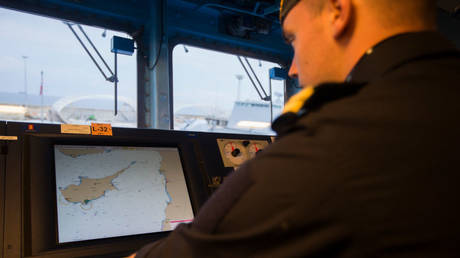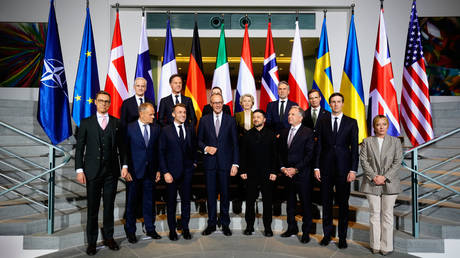
A duty commander has been convicted of negligence in a 2018 crash that sank a navy frigate after a massive NATO exercise
A Norwegian Navy officer who was commanding a frigate when it collided with an oil tanker and sank while returning from the largest NATO exercises since the Cold War ended has been found guilty of negligence by a district court.
The unidentified officer was convicted on Monday in Hordaland over the November 2018 incident, which left Norway’s KNM Helge Ingstad warship at the bottom of the sea. He was reportedly given a 60-day conditional sentence.
The $500 million frigate collided with the Sola TS tanker near the Sture oil terminal north of Bergen, ripping a hole in the warship’s side and forcing the evacuation of 137 crew members before it sank. The Maltese-flagged tanker incurred only slight damage, while the naval vessel was scrapped because it would have been too costly to repair.
Prosecutors blamed the crash on a navigation error. The 33-year-old duty officer, who had reportedly been at his post for just eight minutes when the crash happened, was the only person criminally charged over the incident. Although he acknowledged making mistakes, he claimed that it was unfair to hold him solely responsible for the wreck because errors were also made by the tanker crew and maritime traffic controllers.
Norway’s Accident Investigation Board found in its preliminary probe of the collision in 2019 that the frigate’s seven-person bridge team bore a significant share of the blame. The Helge Ingstad crew mistakenly believed that the tanker was a fixed object until just before the crash and made no effort to change course until it was too late, despite warnings from the Sola TS. Twitt Navigation Ltd., the tanker’s owner, agreed last year to pay Norway’s government 235 million kroner ($22.2 million) for its role in the crash.
The Helge Ingstad was returning from NATO’s Trident Juncture exercise, which was hosted by Norway and involved 31 nations, at the time of the incident. Trident Juncture was touted as the military alliance’s largest drills since the collapse of the Soviet Union and was meant to demonstrate NATO’s resolve and capabilities amid perceived Russian aggression in the northern seas. It involved 50,000 troops, 65 vessels, 250 aircraft and around 10,000 vehicles.
READ MORE: Pooing troops, empty bars, sinking frigate and other takeaways from NATO largest drills




